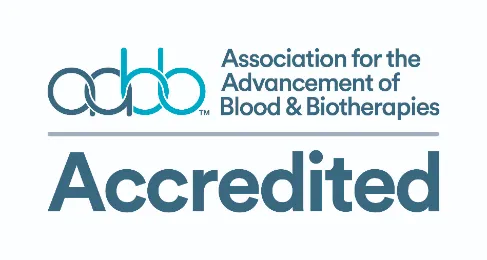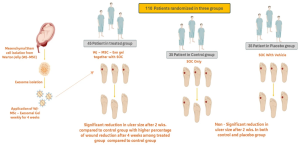Stem Cell Research & Therapy, 14/05/2025
Background
Atopic dermatitis (AD) is a chronic inflammatory skin condition, often described as an “immortal cancer” owing to its persistent nature and the challenges associated with its treatment. Overall, 223 million people are affected by AD worldwide, with a significant incidence of 30% among children. Moreover, 40% of patients experience severe symptoms, such as persistent rash, intense itching, sleep disruption, and comorbidities, including asthma, depression, and anxiety. Its complex pathogenesis involves genetic predisposition, environmental triggers, impaired skin function, immune dysregulation, and microbial imbalance. These complexities complicate treatment because the underlying causative factors remain incompletely understood.
Current therapies primarily focus on symptom management, including the use of emollients, glucocorticoids, antihistamines, immunosuppressants, biologics, and small-molecule inhibitors. However, these conventional medications have limitations, such as unclear mechanisms of action, suboptimal bioavailability, potential side effects, and limited efficacy. Consequently, exploring safer and more effective treatment alternatives to address the unmet needs of patients with AD is imperative.
Mesenchymal stem cells (MSCs), which can be derived from various tissues, including the placenta, adipose tissue, bone marrow, and umbilical cord, exhibit potent paracrine and immunomodulatory properties. Furthermore, MSC therapy exhibits significant efficacy in preclinical models of inflammatory skin conditions, including AD.
Human umbilical cord mesenchymal stem cells (hUC-MSCs) offer several advantages, such as easy procurement, high purity, abundance, and enhanced activity. The use of hUC-MSCs circumvents the ethical concerns associated with stem cell research, minimizes immune rejection, and mitigates potential harm to donors and recipients. These studies demonstrate that hUC-MSCs and their derivatives alleviate dermatitis symptoms and reduce the severity of skin lesions in animal models of AD. hUC-MSCs also modulate inflammatory cytokines, including IgE, IL-6, IL-1β, and TNF-α, while increasing the expression of anti-inflammatory cytokines such as IL-10 and TGF-β1. However, the therapeutic potential of hUC-MSC conditioned medium (hUC-MSC-CM), a cell-free alternative to hUC-MSCs, with lower tumorigenicity risk, remains largely underexplored. Moreover, mechanistic insights into neutrophil modulation and chemokine networks are lacking.
This study aimed to elucidate the mechanism of action of hUC-MSCs in AD treatment in a bit to advance our understanding of their therapeutic potential in the pathogenetic context of this disease. In both mouse models, hUC-MSCs or hUC-MSC-CM was administered through subcutaneous injection, and the extent of skin damage, histological alterations, and changes in serum IgE levels were subsequently evaluated. Mechanistic investigations revealed that hUC-MSCs inhibited the JAK-STAT signaling pathway in keratinocytes via exosomal mechanisms, suppressed chemokine expression in these cells, and significantly reduced neutrophil infiltration in mouse skin, thereby exerting therapeutic effects.
Methods
Human umbilical cord mesenchymal stem cells (hUC-MSCs) at passage 5 were provided by S-Evans Biosciences (Hangzhou, China), characterized by flow cytometry, and confirmed by adipogenic and osteogenic differentiation assays. The hUC-MSC conditioned medium (hUC-MSC-CM) was obtained after culturing cells (2.0 × 10⁵ cells/mL) in serum-free medium for 48 h, followed by centrifugation, and exosomes were isolated using an extracellular vesicle extraction kit.
AD mouse models were established using 1-chloro-2,4-dinitrobenzene (DNCB) and ovalbumin (OVA). hUC-MSCs (2 × 10⁶ cells/mL, 0.2 mL) or hUC-MSC-CM (0.4 mL) were subcutaneously injected according to the experimental schedule. Skin and serum samples were collected for histopathology, ELISA, qRT-PCR, western blotting, cytokine array, and flow cytometric analyses. HaCaT keratinocytes were stimulated with TNF-α/IFN-γ and treated with hUC-MSC-CM, hUC-MSC-Exos, or the STAT3 inhibitor. RNA sequencing, transmission electron microscopy, and nanoparticle tracking analysis were performed to characterize molecular changes and exosomal features.
Results
Human umbilical cord mesenchymal stem cells (hUC-MSCs) significantly improved DNCB- and OVA-induced atopic dermatitis (AD) in mice. Treatment reduced erythema, epidermal thickening, and inflammation, lowered serum IgE, IL-4, and IL-6 levels, and increased skin barrier proteins filaggrin (FLG) and keratin 1 (Krt1). No weight loss was observed, confirming safety. The conditioned medium (hUC-MSC-CM) showed similar efficacy, relieving skin lesions and lowering serum IgE without adverse effects.
Flow cytometry and immunofluorescence confirmed that hUC-MSC-CM inhibited neutrophil infiltration in the skin.
In vitro, hUC-MSC-CM and its exosomes reduced chemokines (CCL5, CXCL11) in keratinocytes via inhibition of STAT3 phosphorylation.
Conclusions
hUC-MSCs and hUC-MSC-CM effectively attenuate AD by inhibiting the STAT3 signaling pathway, reducing keratinocyte-derived chemokines, and blocking neutrophil chemotaxis, thereby alleviating skin inflammation. These findings provide experimental evidence supporting the potential of hUC-MSC-based or cell-free therapies as novel strategies for treating atopic dermatitis.
References
Shao, J., Xie, Z., Ye, Z. et al. (2025). Human umbilical cord mesenchymal stem cell therapy for atopic dermatitis through inhibition of neutrophil chemotaxis. Stem Cell Res Ther 16, 243.
https://doi.org/10.1186/s13287-025-04349-8
Source: Stem Cell Research & Therapy







